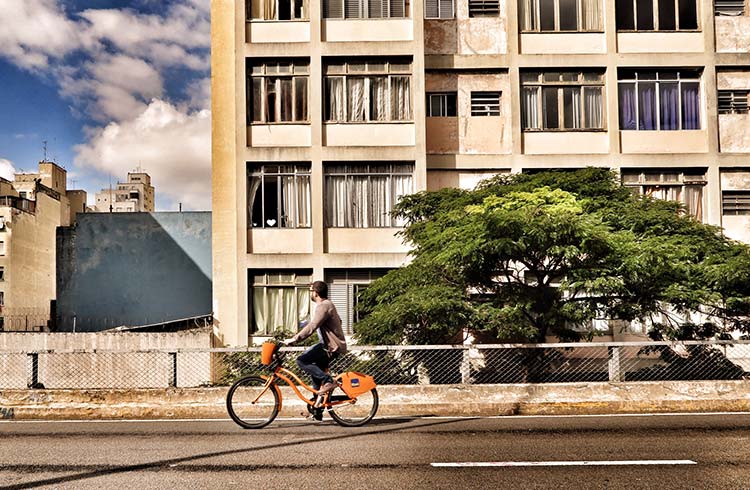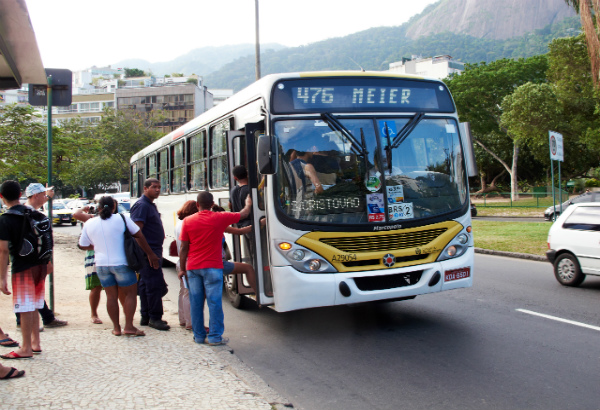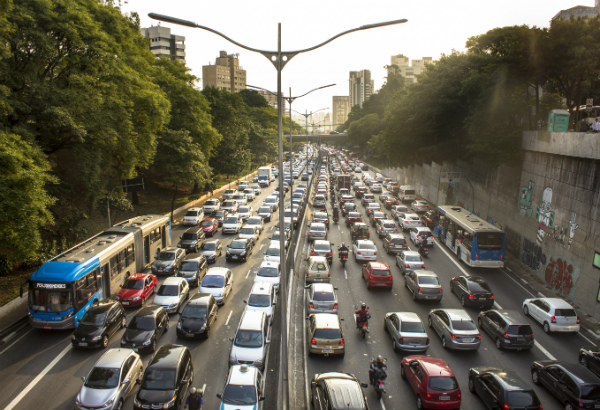Transport in Brazil: Tips for Traveling Around Safely
Coronavirus (COVID-19) and travel: The situation around the world is changing dramatically. Various governments have changed their travel warnings to restrict travel during this time. To understand how this may impact cover under your policy, please go to our FAQs and select your country of residence.
For the latest travel warnings and alerts around the world, read about lockdowns and border restrictions.
Whether you're traveling around Brazil by plane, bus or car, here are our travel safety expert's tips on getting around safely.
 Photo © Photo by D A V I D S O N L U N A on Unsplash
Photo © Photo by D A V I D S O N L U N A on Unsplash
If you want to see all of Brazil, you're going to have to travel by many different modes of transport – and some are much more dodgy than others. Here are our top tips on getting around this enormous South American country.
- Domestic Flights in brazil
- Bus Travel
- Metro and Subway
- Taxis
- Tips for Driving in Brazil
- Road Conditions
- Road Rules
- Traffic in Brazil
- Drink Driving in Brazil
- Carjacking Risk
Domestic flights in Brazil
The sheer size of Brazil means, if you're on a short holiday, you'll have to either severely limit the scope of your trip or resign yourself to taking some internal flights.
Unfortunately, even domestic flights in Brazil are expensive. If you plan to visit a number of different cities, an air pass is the most economical option. The country's biggest airlines, Tam and Gol, both offer these multi-trip tickets, each with their own string of conditions attached so make sure to read the fine print.
Most notably, both are only available to non-residents and must be bought outside the country. To be eligible you also have to have an international flight ticket into and out of Brazil, making it a thrifty but complicated option.

Brazil bus travel
Because of the high cost of domestic flights bus travel is popular and easy in Brazil, servicing most areas of the country.
Brazil's coach services aren't quite as smooth running or reliable as those in Chile or Argentina but they will get you there eventually.
The huge distances put a strain on the vehicles and breakdowns are not uncommon, however, if you choose one of the larger companies replacement buses are usually not far off.
The distance may take a heavier toll on you personally, with some trips stretching well over 40 hours. Although the buses will stop for food and drink, some of the stops are at very odd hours and you may sleep through them. Don't rely on finding anything of real nutritional value; bring water and snacks on the coach with you. Brazil's truck stop diners are nothing to write home about.
Brazil's metro and subway
The metro is one of the easiest ways to get around major cities like Rio and São Paulo. Fares are around R$3.50 - R$3.80. If you plan to use the metro often, there are rechargeable travel cards you can purchase.
The metros are generally cleaner and safer than traveling by local bus. However, the metros do not operate at night (unless it's Rio Carnivale) so you will need to make alternative arrangements.
Be aware of discount tickets on the street, they are likely to be fakes. Always purchase from a metro station ticket booth or machine.
As always, when traveling on the metro make sure that you keep watch of your belongings at all times, especially during peak hours when metro carriages are packed full.
Taxis in Brazil
There is no shortage of taxis in most Brazilian cities and they are a cheap way of getting around (provided you don't get stuck in traffic).
Taxis are also a safe option if you are planning to have a night out in the city however always make sure you get into a licensed taxi. It's advised to phone for a taxi or pick one up at a taxi stop rather than hailing one off the street.
In the cities, taxis will run on a metered price per kilometer whereas if you are out of town a bit further, you will need to negotiate a price with the driver. A good tip to make sure you don't get ripped off on the fare is to ask your hotel or local tourist information office what an approximate fare would be and when you get in the taxi, show the driver on a map where you want to go.
Tipping is not necessary but a nice gesture should you receive good service.
Tips for driving in Brazil
Brazil's transport options will easily get you to the major destinations but renting a car in Brazil provides a little more freedom and exploration. It could save you time and money but be sure you know what you're signing up for. If you are a first-time traveler to Brazil, it's probably best to stick to public transport and get a feel for the local traffic before jumping behind the wheel.
If you are in Brazil for less than 6 months your national driver's license is valid, however, we recommend getting an International Driving Permit just to avoid confusion and annoyance. Some hire companies will incorrectly demand an IDP, while police have been known to target tourists without an international license and threaten huge fines in the hopes of scoring a bribe.
Some roads in Brazil have tolls attached so check and plan accordingly. Most tolls can be anywhere R$1.50 to R$20.00 and priced based on vehicle type and other criteria.
Road conditions in Brazil
Brazil's roads are very good along the well-traveled routes, although they deteriorate as you get towards some of the more remote inland or northern communities.
Enormous speedbumps called lombadas are used to slow down traffic and ease pressure on the police force in some smaller towns. They should be painted with stripes and be preceded by warning signs but keep your eyes peeled. Hitting one of these at speed will be hell on your suspension.
Outside of the major cities, road conditions are poor with many roads unpaved. In rural areas, drivers will encounter large potholes, abandoned vehicles and machinery, stray farm animals, animal carcasses, pedestrians and cyclists who may fail to delineate between road and footpath.
During and after the rainy season, especially following storm activity roads may be muddy and quickly transformed into rivers. The adjacent land can also create mudslides blocking the roadway.
Brazil's road rules
In Brazil, driving is on the right side of the road (same as in the US). It is also compulsory for all occupants in the car to be wearing seatbelts. Children under the age of 10 must sit in the back seats and cell phone use while driving is strictly prohibited. It is also illegal to drive in flip-flops, so make sure you are wearing closed-in shoes.
As in most developed nations, give way to all traffic already in the roundabout. Don't turn right on red lights unless it is signposted.
It's also a good idea to brush up on your Portuguese and read up on common road signs before your driving trip in Brazil.

Traffic in Brazil
The country's drivers, however, are consistently erratic and frequently use the horn, tailgating, or flashing of headlights. As a result, Brazil has a very high road toll, largely due to this reckless driving behaviour. Stick to the right hand lanes for a calmer and hopefully less eventful drive. If you're driving in the city, be aware that Brazilian traffic is rather undisciplined, so expect the unexpected.
The swarms of motorcycles weaving through traffic are a major concern. Additionally, Brazil is renowned for its traffic jams. If you need to be somewhere, leave plenty of time to get there or choose an alternative method of getting to your destination if possible.
Drink driving in Brazil
Drinking and driving is not the smartest move, period, but in Brazil, you will pay a heavy price for reckless behavior. Brazil’s zero-tolerance drink/driving policy, which highway police enforce without clemency, stems from statistics that estimate some 20,000 deaths per year on Brazil’s roads are alcohol-related.
The blood alcohol limit for drivers is zero and there are strict penalties for anyone who drinks and drives such as large fines or even imprisonment.
Carjacking risk in Brazil
There is a significant risk of carjacking and violent crime in Brazil's bigger cities such as Rio and São Paulo. Although many hire cars come without air conditioning, we recommend keeping the windows up and sticking to the less conspicuous inner lanes while you're driving through the city to minimize the risk of losing your car or its contents.
Take care when at intersections, red lights or in traffic jams. If you feel threatened at a red light at night you're allowed to drive on. Be mindful that some drivers may skip a stop sign at night to avoid being carjacked.
Never give rides to hitchhikers or accept rides from strangers. Always do what the carjacker asks and relinquish your vehicle. Your safety is more important than a rental vehicle.
Smash and grabs are also common, so find a secure car park and never leave anything of value in the vehicle.
Get a travel insurance quote for Brazil
You can buy at home or while traveling, and claim online from anywhere in the world. With 150+ adventure activities covered and 24/7 emergency assistance.
Simple and flexible travel insurance
You can buy at home or while traveling, and claim online from anywhere in the world. With 150+ adventure activities covered and 24/7 emergency assistance.
Get a quote
1 Comment
Besides flying, I believe that intercity buses are usually pretty safe. Not so much in the North and Northeast countryside, by quite safe in the rest of the country. I ended up writing an article about this with tips on how to travel by bus in Brazil, as well as the best websites to buy your bus ticket online. If you are interested… http://outofyourcomfortzone.net/how-to-travel-around-brazil-with-long-distance-bus-2-best-bus-ticket-websites/